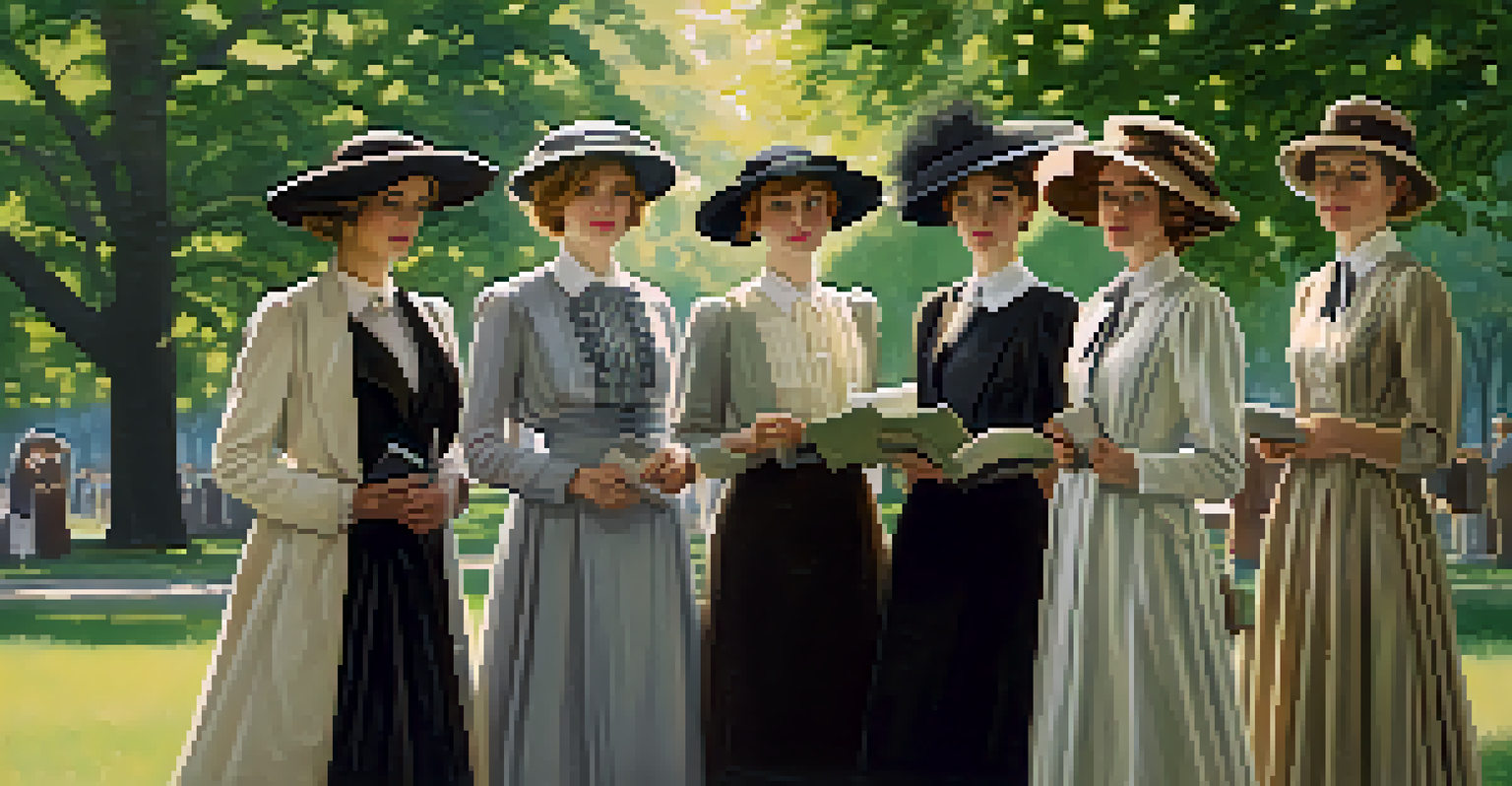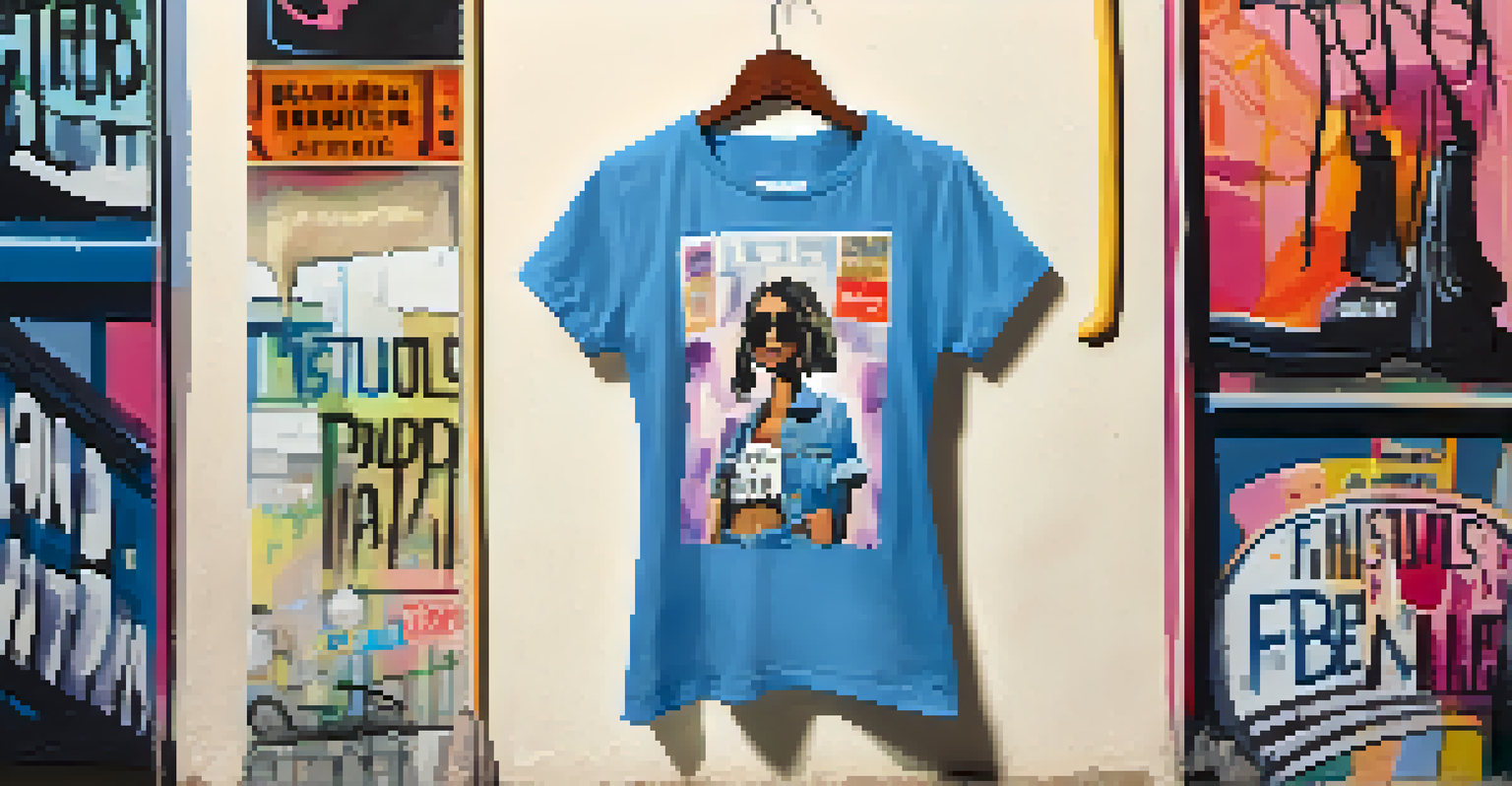The Impact of Social Movements on Fashion Trends: A Global View

Understanding the Connection Between Fashion and Social Movements
Fashion and social movements have always shared a symbiotic relationship. When people come together to advocate for change, their collective identity often finds expression through clothing. For instance, the Civil Rights Movement in the 1960s saw activists donning specific styles that symbolized unity and resistance.
Fashion is the armor to survive the reality of everyday life.
This connection goes beyond mere aesthetics; fashion becomes a powerful tool for expressing beliefs and values. In many cases, clothing choices reflect the ideals of a movement, whether it's the vibrant colors of Pride Month or the black attire worn during Black Lives Matter protests.
As movements gain momentum, they often inspire designers and brands to incorporate these themes into their collections, leading to a broader cultural shift. This means that what starts as grassroots activism can evolve into global fashion trends that resonate with audiences far and wide.
Historical Examples of Fashion Influenced by Social Movements
Throughout history, numerous social movements have left an indelible mark on fashion trends. The suffragette movement in the early 20th century is a prime example, where women adopted more practical clothing to symbolize their fight for equality. The shift from corsets to more comfortable attire represented a broader desire for freedom and autonomy.

Similarly, the punk movement of the 1970s used fashion as a form of rebellion against the status quo. Leather jackets, ripped jeans, and bold hairstyles became symbols of defiance, allowing individuals to make a statement without uttering a word.
Fashion Reflects Social Change
Fashion serves as a powerful medium for expressing beliefs and values, often influenced by social movements.
More recently, the rise of eco-consciousness has spurred the sustainable fashion movement, encouraging brands to adopt ethical practices. This evolution reflects a growing awareness of environmental issues, demonstrating how social movements can reshape not just styles but also industry standards.
The Role of Youth Culture in Fashion Evolution
Youth culture has historically played a pivotal role in driving fashion trends, often aligning with social movements. Young people are typically at the forefront of change, embracing new ideas and styles that reflect their values and beliefs. For example, the counterculture of the 1960s, which promoted peace and love, influenced the bohemian styles that became popular during that era.
Clothes mean nothing until someone lives in them.
As social movements gain traction, they often resonate deeply with younger generations, who use fashion as a means of self-expression and identity. This can be seen in the rise of streetwear, where casual clothing styles represent various social and political statements.
Moreover, social media has amplified this dynamic, allowing youth-led movements to gain visibility and influence. Platforms like Instagram and TikTok enable young activists to showcase their fashion choices, further intertwining style with social commentary.
Fashion as a Medium for Political Statements
Fashion often serves as a canvas for political expression, allowing individuals to convey their beliefs through what they wear. T-shirts emblazoned with slogans or symbols can create a sense of solidarity among activists and communicate messages to a broader audience. For example, the 'We Should All Be Feminists' tee became a global sensation, promoting gender equality.
In addition, high-profile events such as the Met Gala have seen celebrities use their fashion choices to highlight social issues. When stars wear garments that reflect movements like climate change awareness or racial justice, they harness their influence to spark conversations around these critical topics.
Youth Drive Fashion Trends
Young people play a crucial role in shaping fashion trends, using style as a form of self-expression aligned with social movements.
This intersection of fashion and politics highlights the power of clothing as a means of advocacy. When fashion becomes a vehicle for dialogue, it can inspire action and encourage individuals to engage with pressing social issues.
Global Movements and Their Fashion Impact
Social movements aren't confined to one region; they span across the globe, each influencing local fashion scenes. The Arab Spring, for example, inspired a wave of activism and solidarity that transcended borders, with fashion becoming a tool for expressing dissent. Traditional garments were often worn with pride to assert identity amidst calls for change.
Similarly, the global climate movement has prompted a shift towards sustainable fashion practices worldwide. This collective effort encourages consumers to make mindful choices, leading to the rise of brands that prioritize eco-friendly materials and ethical production methods.
As these movements gain international attention, they inspire fashion designers to create collections that reflect global concerns. This interconnectedness illustrates how fashion can serve as a universal language for social justice, bridging cultural divides.
The Influence of Social Media on Fashion Movements
Social media has revolutionized the way fashion trends emerge and spread, particularly in relation to social movements. Platforms like Instagram and TikTok allow activists to share their messages and personal styles, creating a ripple effect that can influence global fashion. A single viral post can spark trends that resonate with thousands, if not millions, of followers.
Moreover, influencers and celebrities often utilize their platforms to champion social causes, intertwining their fashion choices with advocacy. This relationship has led to the rise of 'influencer fashion,' where styles are not just about aesthetics but also about the messages they convey.
Social Media Amplifies Fashion Impact
Platforms like Instagram and TikTok have transformed how fashion trends emerge and spread, intertwining style with social activism.
As a result, social media has become a powerful tool for shaping public perception, allowing fashion to serve as a vehicle for activism in real-time. This evolution underscores the importance of digital platforms in the ongoing dialogue between fashion and social movements.
Looking Ahead: The Future of Fashion and Social Movements
As we look to the future, it's clear that the relationship between fashion and social movements will continue to evolve. With growing awareness of social issues, consumers are increasingly demanding that brands align with their values. This shift is prompting fashion companies to incorporate diversity, sustainability, and ethical practices into their business models.
Moreover, upcoming generations are likely to drive even more significant changes, as they prioritize authenticity and social responsibility in their fashion choices. This means that brands will need to adapt to remain relevant, often collaborating with social movements to create meaningful connections with their audiences.

Ultimately, the future of fashion will likely be marked by a stronger emphasis on social impact. As movements continue to emerge, fashion will remain a vital platform for expression, solidarity, and change, illustrating the ever-evolving dialogue between style and social justice.